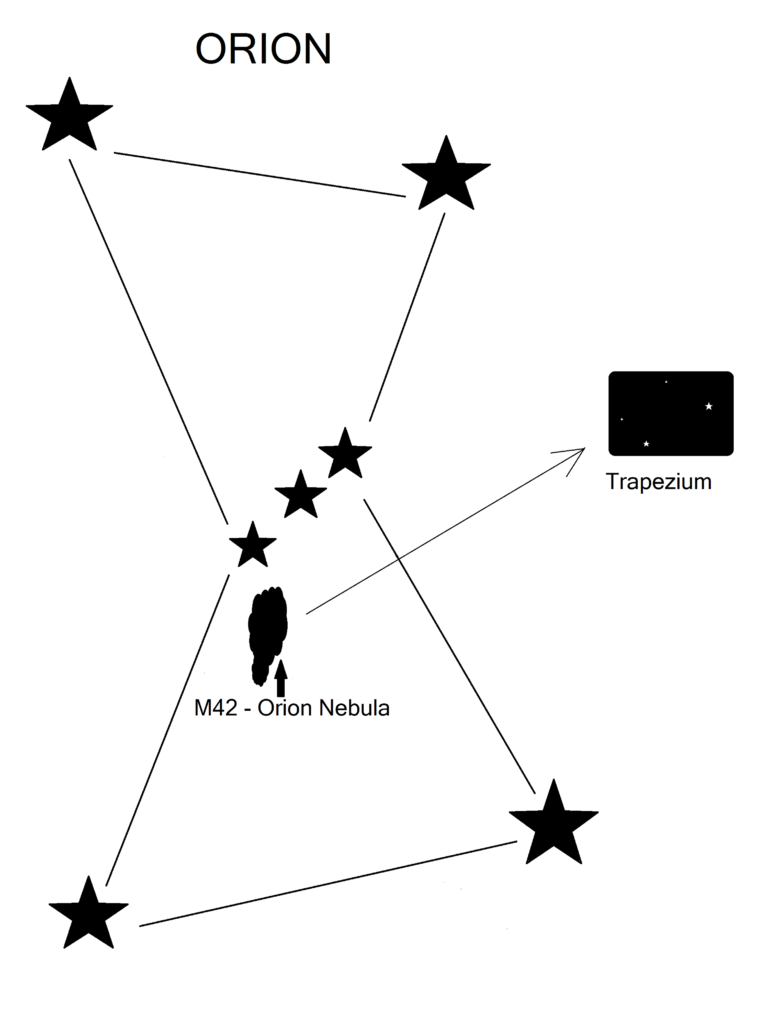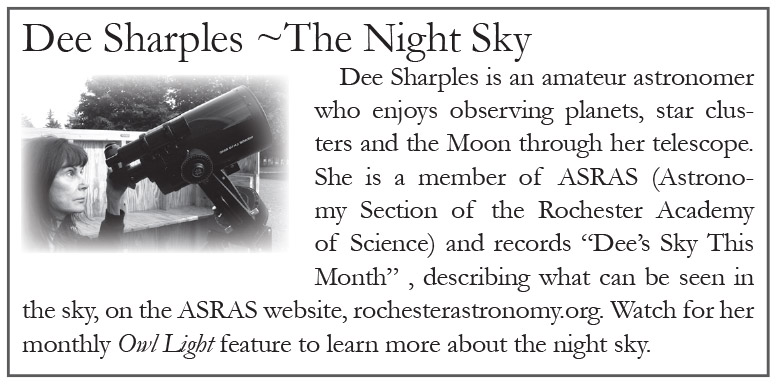The Night Sky: January
A Messier object and Trapezium in Orion
Total lunar eclipse January 20-21
Dee Sharples –
 Astronomers in the 1700s searched the night sky for comets using telescopes that were far inferior to those available today. They occasionally came across a hazy patch of light and mistakenly identified it as a new comet entering our solar system. After observing the object for a period of time and realizing it wasn’t a comet, they called it a nebula.
Astronomers in the 1700s searched the night sky for comets using telescopes that were far inferior to those available today. They occasionally came across a hazy patch of light and mistakenly identified it as a new comet entering our solar system. After observing the object for a period of time and realizing it wasn’t a comet, they called it a nebula.
Charles Messier was one of those comet hunters, a French astronomer born in 1730. In 1758, as he was searching for comets, he came across a faint smudge of light in the constellation Taurus. When he realized it wasn’t moving in relation to the background stars, he knew it was just another nebula.
To avoid confusion as he continued searching for comets, Messier decided to compile a list of these objects, beginning with the one he had found in Taurus. It was designated as Messier-1 (M1) and is now called the Crab Nebula, a cloud of dust particles and gas. No longer would a diffuse patch of light in the sky be mistakenly identified as a comet.
Charles Messier, with data from his own observations and that provided by colleagues, went on to log the exact locations of 103 objects in the sky, creating Messier’s “Catalogue of Nebulae and Star Clusters”. This list, which also includes galaxies, was updated in the 20th century and now contains 110 objects. It’s still used today as a valuable reference guide for amateur astronomers.
You can see a Messier object with your naked eye in January. Look for the constellation Orion in the south around 8:00 p.m. Find a spot away from lights and let your eyes adjust to the dark for about 15 minutes.
Locate Orion’s belt, three equally bright stars running across the center of his body. Below the left-most belt star is a fuzzy patch of light. This is M42, the Orion Nebula, a huge cloud of dust and ionized gas where new stars are being born today. Within the nebula, but only visible through a telescope, is the Trapezium, four young massive stars which form the shape of a trapezoid.
To see photos of Messier objects taken by the Hubble Space Telescope, check out this website: www.nasa.gov/content/goddard/hubble-s-messier-catalog
A total lunar eclipse will occur on the night of January 20-21. The eclipse officially begins at 10:34 p.m. on the 20th as the Moon starts to move into the Earth’s shadow and reaches totality at 11:41 p.m. As the Moon moves toward totality, it will begin to turn a deep orange color. At 12:43 a.m. on the 21st, it starts to slowly reemerge from the Earth’s shadow. The next total lunar eclipse will occur in May 2021, so hopefully we’ll have a clear night to enjoy this one.
